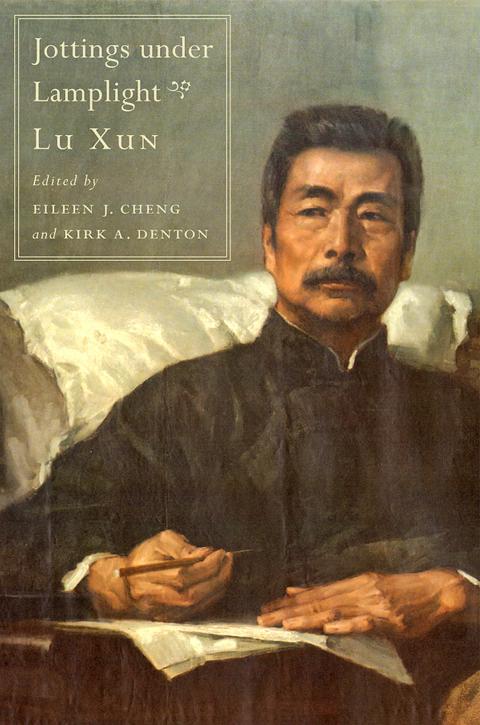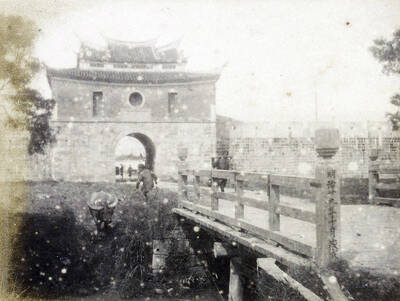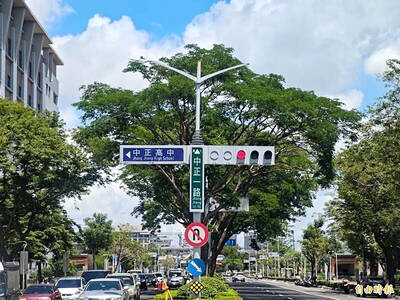I am really grateful, not for the first time, to Harvard University Press. I’d previously found the celebrated Chinese writer Lu Xun (魯迅) somewhat indigestible, but these fluent and engaging translations of many of his essays have converted me in no insignificant way.
Spanning the era when China transitioned from centuries of imperial rule to become the Republic of China, Lu was very much the product of his age. His work is characterized by criticism of Chinese traditions and habits of mind, by frequent calls for modernization, and by the sometimes qualified enthusiasm he expressed for left-wing Chinese opinion.
Because of these left-wing sympathies his writings were banned in Taiwan until the late 1980s, when so much else changed in Taiwanese society. But today the name of his most famous creation, Ah-Q, appears on a brand of Taiwanese instant noodles.

The relation between Lu’s work and the Chinese Nationalist Party (KMT) was complex, however. On the one hand the KMT banned his work on the grounds of his communist sympathies, and even during his lifetime Lu lived his later life in the Japanese concession in Shanghai to protect himself from the KMT’s “white terror.” (Yes, this was operational in China, even before the KMT began to concentrate its activities in Taiwan). But, on the other hand, the KMT valued his critique of imperial China, and uncritically borrowed his calls on China to modernize.
It’s noteworthy that the Chinese Communist Party (CCP), too, was not always entirely happy with Lu. Firstly, he never joined the party, and secondly he was skeptical about some trends in communist thinking. Mao Zedong, nonetheless, wrote the inscription that stands over his grave. He died in 1936, in other words well before the Communists took control of the whole of China.
Jottings Under Lamplight is a major set of new translations of many of Lu’s essays. Around half of them have been translated before, by Gladys Yang and Yang Xianyi (in 1956 and 1980). But these new editors consider that the English in the older versions was “at times stilted,” and that this combined with cases of omission and emendation. The rest of the essays are translated for the first time.
Lu Xun started off as a critic of Chinese traditions. He went to Japan with the aim of becoming a doctor, but his exposure to Western medicine there made him believe traditional Chinese medicine was, “wittingly or unwittingly,” fraudulent, as he writes in the preface to Outcry (吶喊, 1922). Similarly, he was instrumental in founding Wilderness (莽原) magazine for writers seeking to modernize China.
Reading the texts assembled here, it’s impossible not to notice how often Lu refers to people who hate his writings. Given the social context in China as a whole, this hostility isn’t surprising. The new seeking to replace the received will, after all, always encounter opposition, especially among the old.
Several pieces here refer to Lu’s 1921-1922 novella The True Story of Ah-Q (阿Q正傳), confronting queries such as why he made his character become a revolutionary, and why he had him executed for a minor crime as a “grand finale.” The story concerns a peasant of little education whose cast of mind exemplifies what Lu saw as the characteristic faults of the traditional Chinese mentality.
In What Happens After Nora Walks Out (娜拉走後怎樣, 1924), Lu considers Ibsen’s play The Doll’s House where as the play ends a housewife, Nora, leaves her husband and family to seek an independent life. Lu says such a woman in China would only meet degradation (i.e. turn to prostitution) or return home. But he goes on to say that in an ideal society of the future, in which men and women were equal and money divided equally between husbands and wives, then she might stand a chance.
In My Views on Chastity (我之節烈觀, 1918) Lu looks at the traditional Chinese belief that a widow shouldn’t re-marry, for the “moral health of the nation.” How can the moral health of the nation possibly be influenced one way or another, he asks. He ends with the hope that everyone will achieve happiness, by which he must mean sexual happiness, in whatever way suits them, and hopes a monument will be erected to all those, especially women, who’ve sacrificed themselves to pointless ideals.
And in the extremely short Must-read Books for Young People, (青年必讀書) Lu urges them to read foreign books, not Chinese ones. And that’s all he says.
One Nationalist critic wrote that Lu Xun was “full of suspicion,” and indeed he was, but he was also “suspicious of [his] own disillusionment.” In this he resembles no one in Western literature so much as George Orwell, a lifelong socialist but nonetheless a constant critic of the left, as Animal Farm and 1984, along with the notorious final paragraph of The Road to Wigan Pier, amply make clear.
It can be argued that any independent thinker is likely to be viewed in this yes-and-no fashion by theory-based politicians. Orwell was valued by UK traditionalists as an anti-communist, but continued to be treated with caution as an out-and-out socialist. No doubt UK socialists had similarly mixed views.
Today, Lu’s works such as Ah-Q and Diary of a Madman (狂人日記) are either taught in Taiwan’s secondary and tertiary educational institutions or, at the very least, students are encouraged to read them. And his critiques of the Chinese mentality, I’m reliably informed, still find resonance among the Taiwanese population.
Another aspect of Lu Xun is his emblematic use of the Chinese vernacular. This is why, the editors say in their preface, Ah-Q has always been hard to translate, and is generally less attractive to foreign readers than it is to Chinese speakers. These new essay translations are by various hands, but they all attempt to mirror Lu’s use of colloquial speech patterns in a non-fiction context.
The editors also point out that Lu is best known in the West for his fiction, but that most of his output was actually in essay form. And it’s impossible not to warm to him in these essays — he’s so reasonable and so sane. The excellent translations add to the attraction, combining as they do just the right amount of colloquialism with clarity, and everywhere exhibiting a relaxed informality. This book is consequently a most welcome addition to the large corpus of Chinese literature now available in English.

June 9 to June 15 A photo of two men riding trendy high-wheel Penny-Farthing bicycles past a Qing Dynasty gate aptly captures the essence of Taipei in 1897 — a newly colonized city on the cusp of great change. The Japanese began making significant modifications to the cityscape in 1899, tearing down Qing-era structures, widening boulevards and installing Western-style infrastructure and buildings. The photographer, Minosuke Imamura, only spent a year in Taiwan as a cartographer for the governor-general’s office, but he left behind a treasure trove of 130 images showing life at the onset of Japanese rule, spanning July 1897 to

One of the most important gripes that Taiwanese have about the Democratic Progressive Party (DPP) is that it has failed to deliver concretely on higher wages, housing prices and other bread-and-butter issues. The parallel complaint is that the DPP cares only about glamor issues, such as removing markers of Chinese Nationalist Party (KMT) colonialism by renaming them, or what the KMT codes as “de-Sinification.” Once again, as a critical election looms, the DPP is presenting evidence for that charge. The KMT was quick to jump on the recent proposal of the Ministry of the Interior (MOI) to rename roads that symbolize

On the evening of June 1, Control Yuan Secretary-General Lee Chun-yi (李俊俋) apologized and resigned in disgrace. His crime was instructing his driver to use a Control Yuan vehicle to transport his dog to a pet grooming salon. The Control Yuan is the government branch that investigates, audits and impeaches government officials for, among other things, misuse of government funds, so his misuse of a government vehicle was highly inappropriate. If this story were told to anyone living in the golden era of swaggering gangsters, flashy nouveau riche businessmen, and corrupt “black gold” politics of the 1980s and 1990s, they would have laughed.

It was just before 6am on a sunny November morning and I could hardly contain my excitement as I arrived at the wharf where I would catch the boat to one of Penghu’s most difficult-to-access islands, a trip that had been on my list for nearly a decade. Little did I know, my dream would soon be crushed. Unsure about which boat was heading to Huayu (花嶼), I found someone who appeared to be a local and asked if this was the right place to wait. “Oh, the boat to Huayu’s been canceled today,” she told me. I couldn’t believe my ears. Surely,